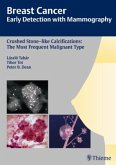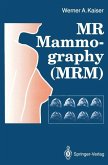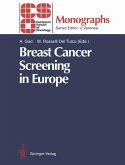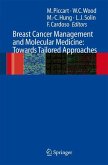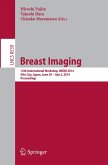"This book is dedicated to those physicians who believe that greater knowledge of the many subtypes of breast cancer will lead to more individualized diagnosis and therapy, to the ultimate benefit of their patients." -the authorsIn Breast Cancer: The Art and Science of Early Detection with Mammography-Perception.
Interpretation, Histopathologic Correlation, László Tabár, one of the world's most renowned mammographers, has shared his decades of experience in presenting the fundamentals of perception and interpretation of mammographic images. This is the second volume in a series of books written by the team of Tabár, Tot, and Dean describing breast cancer in its earliest phase according to the imaging findings and correlating these findings with sophisticated histopathologic images and patient outcome. This volume covers a particularly troublesome subtype of breast cancer characterized by casting type calcifications.
Highlights:
- Extensive coverage of the morphology and outcome of this deceptive breast cancer subtype
- Nearly 1000 illustrations of stunning quality showing the full range of manifestations
- Photomicrographs of large, thin-section pathology slides and unique 3D pathology images which are carefully correlated with mammographic images to explain why mammograms appear as they do
- Stereoscopic images that demonstrate normal breast structures and the distortion caused by this unique malignant process
- Presentation of an original theory of neoductgenesis to explain the surprising disease outcome all too frequently observed
- Scientific rationale for using individualized treatment methods which include the mammographic prognostic featuresFurther volumes in the series will cover
- Crushed stone-like and powdery calcifications
- Spiculated lesions and architectural distortion
Interpretation, Histopathologic Correlation, László Tabár, one of the world's most renowned mammographers, has shared his decades of experience in presenting the fundamentals of perception and interpretation of mammographic images. This is the second volume in a series of books written by the team of Tabár, Tot, and Dean describing breast cancer in its earliest phase according to the imaging findings and correlating these findings with sophisticated histopathologic images and patient outcome. This volume covers a particularly troublesome subtype of breast cancer characterized by casting type calcifications.
Highlights:
- Extensive coverage of the morphology and outcome of this deceptive breast cancer subtype
- Nearly 1000 illustrations of stunning quality showing the full range of manifestations
- Photomicrographs of large, thin-section pathology slides and unique 3D pathology images which are carefully correlated with mammographic images to explain why mammograms appear as they do
- Stereoscopic images that demonstrate normal breast structures and the distortion caused by this unique malignant process
- Presentation of an original theory of neoductgenesis to explain the surprising disease outcome all too frequently observed
- Scientific rationale for using individualized treatment methods which include the mammographic prognostic featuresFurther volumes in the series will cover
- Crushed stone-like and powdery calcifications
- Spiculated lesions and architectural distortion


